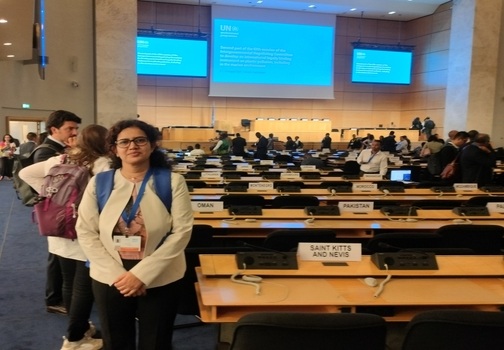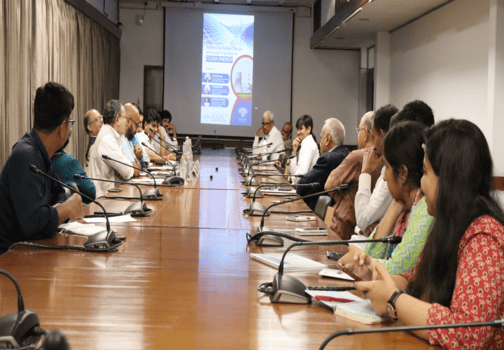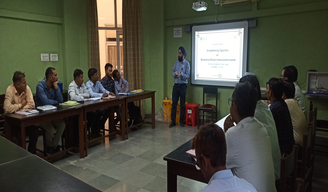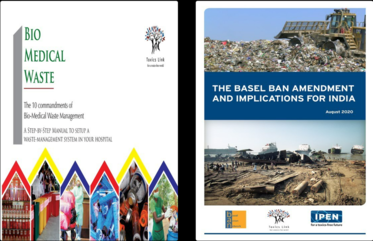Heavy Metals in Ground Water
GOVERNMENT OF INDIA
MINISTRY OF JAL SHAKTI
LOK SABHA
UNSTARRED QUESTION NO: 3077
ANSWERED ON: 16.12.2021
Heavy Metals in Ground Water
Harsimrat Kaur Badal
Will the Minister of JAL SHAKTI be pleased to state:- THE MINISTER OF STATE FOR JAL SHAKTI
(a) whether the Government is aware that arsenic and heavy metals are found in ground water across the country and if so, the details thereof;
(b) the details of number of habitations receiving contaminated water in the country;
(c) whether the Government is aware that in Punjab particularly in Malwa belt ground water comprises of uranium, arsenic, lead and heavy metals which has caused havoc and if so, the details thereof; and
(d) the steps taken by the Government to reduce contamination of water in the country and specifically in Punjab?
ANSWER
THE MINISTER OF STATE FOR JAL SHAKTI
(SHRI BISHWESWAR TUDU)
(a) Yes, Sir. Central Ground Water Board (CGWB) generates ground water quality data of the country on a regional scale as part of its ground water quality monitoring program and various scientific studies. These studies indicate the occurrence of contaminants including arsenic and heavy metals beyond permissible limits (as per BIS) for human consumption in isolated pockets in various States/UTs. The details are given in Annexure-I.
(b) As reported by States/UTs (as on 13.12.2021) 36,873 rural habitations have been reported to have quality issues in drinking water sources. State-wise details in this regard are given at Annexure – II. Government of India in partnership with States, is implementing Jal Jeevan Mission (JJM) in rural areas to provide potable tap water of prescribed quality to every rural households, prioritising quality affected habitations in the country.
(c) As per the data available with CGWB, in the State of Punjab, particularly in Malwa belt, arsenic in ground water beyond the permissible limit has been encountered in 3 districts viz. Mansa, Faridkot and Sangrur; lead from 3 districts viz Bathinda, Ferozepur and Muktsar; cadmium from 4 districts viz Fatehgarh Sahib, Ludhiana, Patiala; and Sangrur, Chromium from 3 districts viz Bathinda, Mansa, and Sangrur districts, uranium from 9 districts viz Bathinda, Moga, Faridkot, Fatehgarh Sahib, Ferozepur, Ludhiana, Muktsar, Patiala and Sangrur.
(d) Water being a State subject, initiatives on water management, including its quality is primarily States’ responsibility; however, various steps have been taken by the Central Government for facilitating ground water quality improvement/ remediation of contamination in the drinking water in the country including Punjab. Details in this regard are given at Annexure III. Further, as per information received from Government of Punjab, the State Government has already covered 707 quality affected habitations with short term/long term measures in terms of surface water projects, arsenic-cum-iron removal plants, household purifiers, community water purification plants and RO plants to provide potable water to affected citizens.
ANNEXURE-I
ANNEXURE REFERRED TO IN REPLY TO PART (a) OF UNSTARRED QUESTION NO. 3077 ANSWERED IN LOK SABHA ON 16.12.2021 REGARDING “HEAVY METALS IN GROUND WATER”.
States Wise Number of Partly Affected Districts with Arsenic and Heavy metals Contaminants in Ground Water of India
S.
No. State/ UT Arsenic
(above 0.01 mg/l) Lead (above 0.01 mg/l) Cadmium (above 0.003 mg/l) Chromium (above 0.05 mg/l)
1 Andhra Pradesh 3
2 Telangana 1 2 1 1
3 Assam 19
4 Arunachal Pradesh
5 Bihar 24
6 Chhattisgarh 1 1 1 1
7 Delhi 2 3 1 4
8 Goa
9 Gujarat 12
10 Haryana 15 17 7 1
11 Himachal Pradesh 1
12 Jammu & Kashmir 3 3 1
13 Jharkhand 2 1
14 Karnataka 2
15 Kerala 2 1
16 Madhya Pradesh 8 16
17 Maharashtra 19
18 Manipur 2
19 Meghalaya
20 Nagaland
21 Odisha 1 1
22 Punjab 10 6 8 10
23 Rajasthan 1 3
24 Tamil Nadu 9 3 1 5
25 Tripura
26 Uttar Pradesh 28 10 2 3
27 Uttarakhand
28 West Bengal 9 6 2 2
29 Andaman& Nicobar
30 Daman & Diu 1
31 Puducherry
Total Parts of 154 districts in 21 states & UTs Pb in parts of 92 districts in 14 states Cd in parts of 24 districts in 9 states Cr in parts of 29districts in 10 states
ANNEXURE-II
ANNEXURE REFERRED TO IN REPLY TO PART (b) OF UNSTARRED QUESTION NO. 3077 ANSWERED IN LOK SABHA ON 16.12.2021 REGARDING “HEAVY METALS IN GROUND WATER”.
State-wise details of rural habitations having contaminants in drinking water source
- No. State/UT
Fluoride Arsenic Iron Salinity Nitrate Heavy Metal Total
- Andhra Pradesh 86 – – 12 1 – 99
- Arunachal Pradesh – – 224 – – – 224
- Assam – 47 14,294 – – 5 14,346
- Bihar 1 11 450 – – – 462
- Chhattisgarh 154 – 30 – – – 184
- Jammu & Kashmir 1 – 2 – – – 3
- Jharkhand 48 1 127 – – – 176
- Kerala 5 – 61 18 8 – 92
- Madhya Pradesh 53 – 24 7 2 – 86
- Maharashtra 14 – 8 13 44 – 79
- Odisha 68 – 3,336 33 23 – 3,460
- Punjab 176 570 10 – 37 184 977
- Rajasthan 1,304 – 5 10,104 691 – 12,104
- Tripura – – 1,079 – – – 1,079
- Uttar Pradesh 41 107 281 79 10 – 518
- Uttarakhand – – 2 – 2 – 4
- West Bengal 145 1,066 1,630 72 – 67 2,980
Total 2,096 1,802 21,563 10,338 818 256 36,873
Source: JJM- IMIS
Note : The problems of quality affected habitations are being addressed through Jal Jeevan Mission.
ANNEXURE-III
ANNEXURE REFERRED TO IN REPLY TO PART (d) OF UNSTARRED QUESTION NO. 3077 ANSWERED IN LOK SABHA ON 16.12.2021 REGARDING “HEAVY METALS IN GROUND WATER”.
(a) Central Pollution Control Board (CPCB) in association with State Pollution Control Boards/Pollution Control Committees (SPCBs/PCCs) is implementing the provisions of The Water (Prevention & Control) Act, 1974 & The Environment (Protection) Act, 1986 in the country including Punjab to prevent and control pollution in water.
(b) Government of India launched Jal Shakti Abhiyan (JSA) in 2019, a time bound campaign with a mission mode approach intended to improve water availability including ground water conditions in the water stressed blocks of 256 districts in India including Punjab. In this regard, teams of officers from Central Government along-with technical officers from Ministry of Jal Shakti were deputed to visit water stressed districts and to work in close collaboration with district level officials to undertake suitable interventions.
In addition, Ministry of Jal Shakti has taken up the “Jal Shakti Abhiyan: Catch the Rain” (JSA:CTR) with the theme “Catch the Rain – Where it Falls When it Falls” to cover all the blocks of all districts (rural as well as urban areas) across the country including Punjab during 22nd March 2021 to 30th November 2021. The campaign was launched by the Hon’ble Prime Minister on 22 March 2021. The improved groundwater recharge due to construction of artificial recharge structures and increased water harvesting is likely to significantly contribute towards reducing the contaminants level in the aquifer waters.
(c) Government of India in partnership with States, is implementing Jal Jeevan Mission (JJM) since August, 2019 to provide potable tap water supply of prescribed quality to every rural household in the country including Punjab by 2024. Under JJM, while planning water supply schemes to provide tap water supply to house-holds, priority is given to quality-affected habitations. While allocating the funds to States/ UTs in a particular financial year, 10% weightage is given to the population residing in habitations affected by chemical contaminants including Arsenic and Fluoride, as on 31st March of the preceding Financial Year.
(d) Since, planning, implementation and commissioning of piped water supply schemes based on a safe water source may take time, purely as an interim measure, States/ UTs have been advised to install community water purification plants (CWPPs) in such habitations, to provide potable water to every household at the rate of 8–10 litre per capita per day (lpcd) to meet their drinking and cooking requirements.
Contd…
(e) Department of Drinking Water & Sanitation had launched a National Water Quality Sub-Mission (NWQSM) on 22nd March, 2017 as a part of National Rural Drinking Water Programme (NRDWP), which has now been subsumed under Jal Jeevan Mission, to provide safe drinking water to 27,544 Arsenic/ Fluoride affected rural habitations in the country including Punjab.
(f) Under Atal Mission for Rejuvenation and Urban Transformation (AMRUT) was launched on 25th June, 2015 in selected 500 cities of the country including Punjab with focus on development of urban infrastructure in various sectors including water supply. States/UTs have the option to take projects on special water supply arrangements for difficult areas, hill and coastal cities, including those having water quality problems.
(g) Under the National Aquifer Mapping Programme (NAQUIM) of CGWB, special attention is being given to the aspect of ground water quality including contamination by toxic substances such as Arsenic in ground water.
(h) CGWB has constructed several exploratory and observation wells in the Country tapping the Arsenic safe deeper aquifer zones delineated through exploration aided detailed aquifer mapping under National Aquifer Mapping programme. Successful wells have been handed over to the State Governments for their purposeful utilization. Further, CGWB is providing technical assistance to the States by sharing the cement sealing technology for tapping contamination free aquifers in Gangetic flood plains.
(i) This Ministry has issued guidelines for control and regulation of groundwater extraction with pan-India applicability notified on 24 September 2020. The guidelines include suitable provisions on measures to be adopted to control groundwater pollution.






